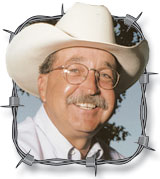One of the oldest crafts in the Ozarks is basket making. People of the Ozarks wove baskets for countless everyday uses in the home, field and barn. Farming families wove baskets, in spare hours for trade or sale, helping the family’s finances. Families would work together on gathering and preparing natural materials such as grasses, timber or vines needed to weave together a basket that would carry game, grains and other agricultural goods.
I was reminded of the trade of basket making recently by a friend of mine who had purchased a basket from a Taney County native. The basket was made by a local farmer we both knew and she was excited to have a handmade basket of her own.
The conversation took me back to times on my family’s farm and reminisces of one of the farm families that lived down the road and through the holler from my family’s home. Steve and Debbie Uhlmann of Dora, Mo., are basket makers that create beautiful works of arts through their split white oak baskets. Although today traditional basket makers are hard to come by, this family is keeping the specialized art form alive.
The Uhlmann family comes from a long line of baskets makers. Debbie’s father Loyd was taught the art of basket weaving from a gentleman from Reeds Springs, Mo., named Bill Rantz. For more than 60 years Debbie’s family has been making white oak basketry in the Ozarks a tradition.
The Uhlmann’s farm is not too far from my parents and I remember many summers spent with our neighbors for BBQ’s, and recall catching lightning bugs, attending bible school at VBS and swimming in the creek as a child with the Uhlmann’s children. I visited Steve and Debbie last summer to watch them make a basket and was in for quite a treat.
I was amazed by the way Steve split the white oaks he cut from his farm and the grace of Debbie’s hands as she wove the splints used as ribs to create a sturdy basket.
The Uhlmann family has made thousands of baskets throughout the years, averaging about 600 per year with 16 different sizes and about four hours labor per basket.
The next time you look across the farm and see sturdy white oak trees standing tall, think about the uses that our pioneers created from these trees. And, thank farmers like Steve and Debbie for continuing their craft so future generations will understand their past.






